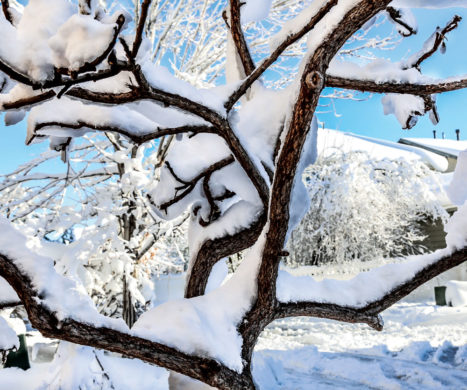 City Forester Michael Swanson offers the following tips for keeping your trees healthy during the winter:
City Forester Michael Swanson offers the following tips for keeping your trees healthy during the winter:
Water—In Colorado’s dry climate, trees need water at least once a month in winter. Water at mid-day when air temperatures are above 40 degrees F. so it will soak in before freezing at night. Water enough to seep at least 12” deep into the soil—when the ground is cold, this may take a couple days. Check soil regularly and water when it is dry. Using the flood-irrigation technique, leave a hose on low-flow for at least 15-20 minutes, moving it around the base of the tree every few minutes until the entire area the width of the canopy is moist. Other watering methods are sprinkler, deep-root fork, soaker hose, or soft spray wand.
Mulch—Apply 3”-4” piled evenly around the tree, leaving a six-inch gap between the tree trunk and the start of the mulch; mulch should extend to the dripline (the circumference of the tree’s widest branches).
Protect from sun scald—Damage can occur to living cells just underneath the bark of south or southwest-facing trees due to the day-and-night fluctuations during Colorado’s winter months. Signs of damage include discolored and/or cracked bark or sunken areas within the bark. To avoid sun scald, purchase tree wrap or use butcher paper to wrap the trunk.
Watch for emerald ash borer—This has destroyed millions of ash trees in the Midwest and has been discovered in Boulder and Arvada. It will inevitably arrive in Denver in the near future. There are an estimated 1.45 million ash trees in the metro area, including 330,000 in Denver. That means one in six Denver trees is an ash, with the majority on residential properties.
Check out BeASmartAsh.org—This campaign educates and enlists the help of Denver residents to identify, treat and replace ash trees.
For more info visit DenverGov.org/Forestry or view this Denver Forestry video: https://youtu.be/Ff3wqWv6R_I.


0 Comments